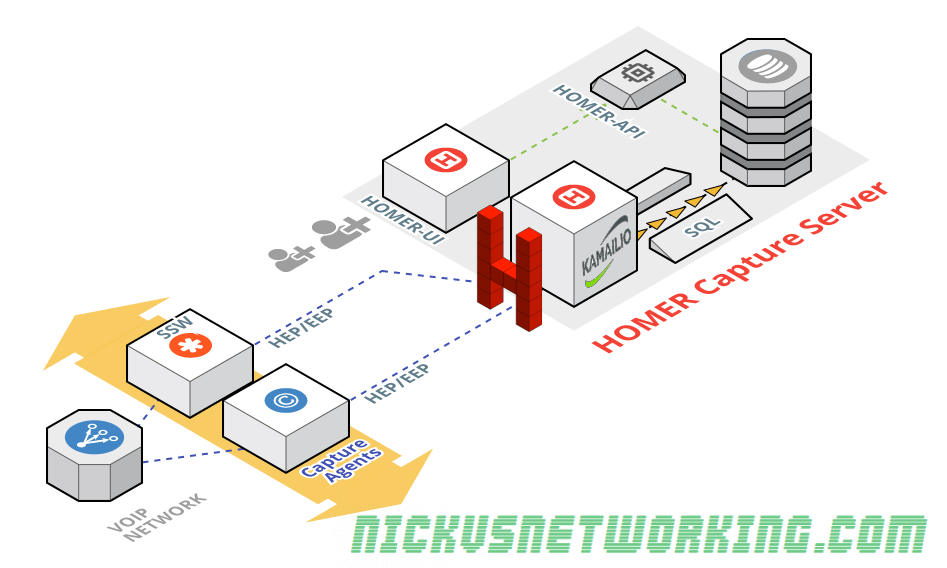There are a number of ways to feed Homer data, in this case we’re going to use Kamailio, which has a HEP module, so when we feed Kamailio SIP data it’ll use the HEP module to encapsulate it and send it to the database for parsing on the WebUI.
We won’t actually do any SIP routing with Kamailio, we’ll just use it to parse copies of SIP messages sent to it, encapsulate them into HEP and send them to the DB.
We’ll be doing this on the same box that we’re running the HomerUI on, if we weren’t we’d need to adjust the database parameters in Kamailio so it pushes the data to the correct MySQL database.
apt-get install kamailio* kamailio-mysql-modules captagent
Next we’ll need to configure Kamailio to capture data from captagent, for this we’ll use the provided config.
cp homer-api/examples/sipcapture/sipcapture.kamailio /etc/kamailio/kamailio.cfg
/etc/init.d/kamailio restart
Next we’ll need to configure captagent to capture data and feed it to Kamailio. There’s two things we’ll need to change from the default, the first is the interface we capture on (By default it’s eth0, but Ubuntu uses eth33 as the first network interface ID) and the second is the HEP destination we send our data to (By default it’s on 9061 but our Kamailio instance is listening on 9060).
We’ll start by editing captagent’s socket_pcap.xml file to change the interface we capture on:
vi /etc/captagent/socket_pcap.xml

Next we’ll edit the port that we send HEP data on
vi /etc/captagent/transport_hep.xml

And finally we’ll restart captagent
/etc/init.d/captagent
Now if we send SIP traffic to this box it’ll be fed into HOMER.
In most use cases you’d use a port mirror so you may need to define the network interface that’s the destination of the port mirror in socket_pcap.xml
